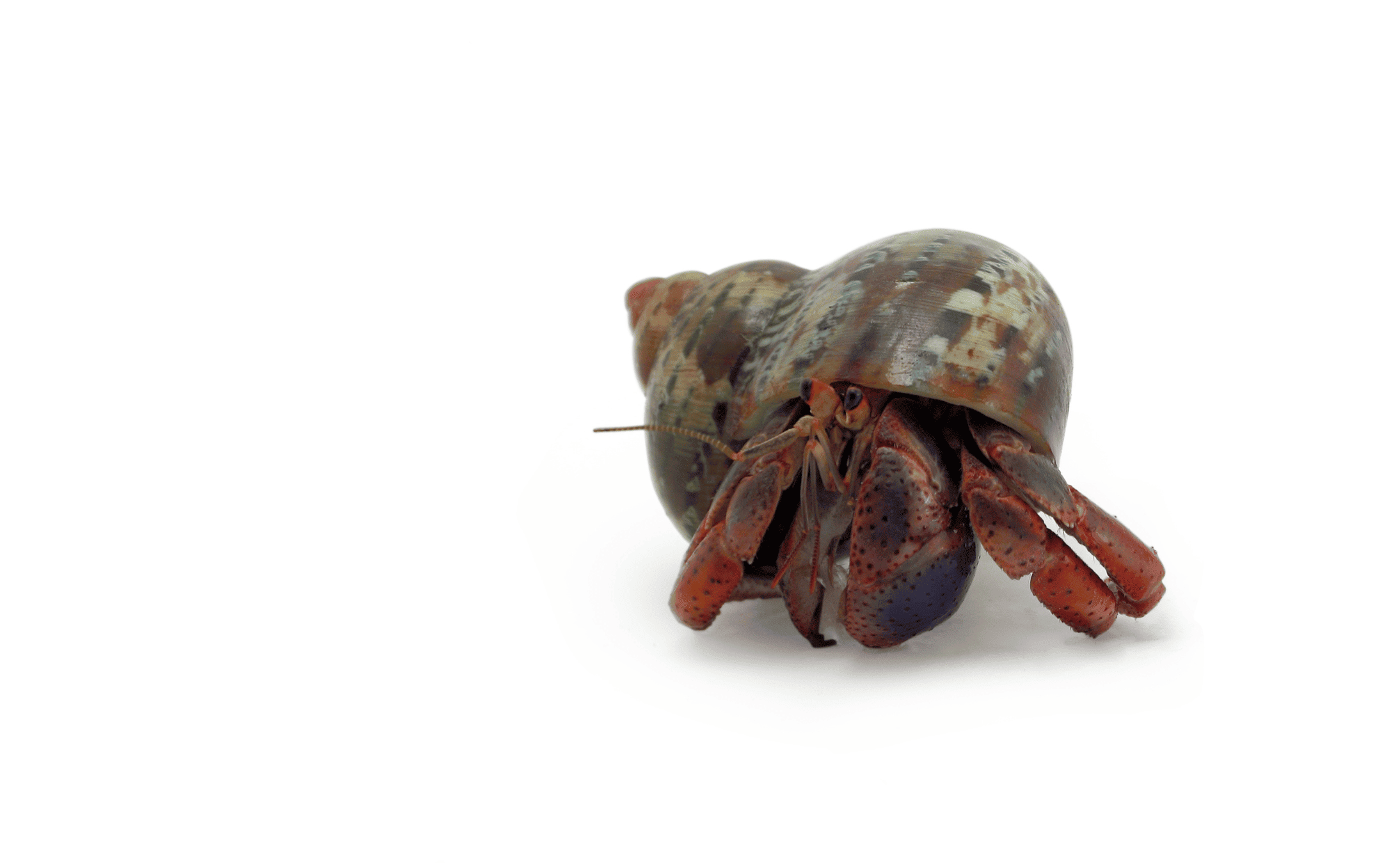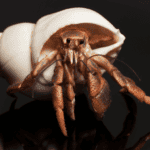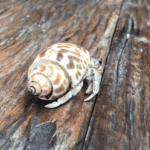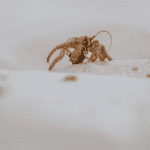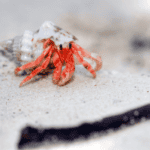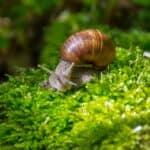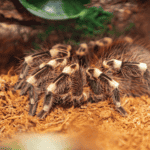Determining the health of a hermit crab is essential for pet owners to ensure they are providing the best care possible. Hermit crabs are known for their reclusive behavior, often burrowing or hiding for extended periods, especially during the molting process. This behavior can make it challenging for owners to differentiate between a healthy crab in its natural molting phase and one that may have passed away. Recognizing the signs of life or death in these creatures involves careful observation and an understanding of their habits and needs.
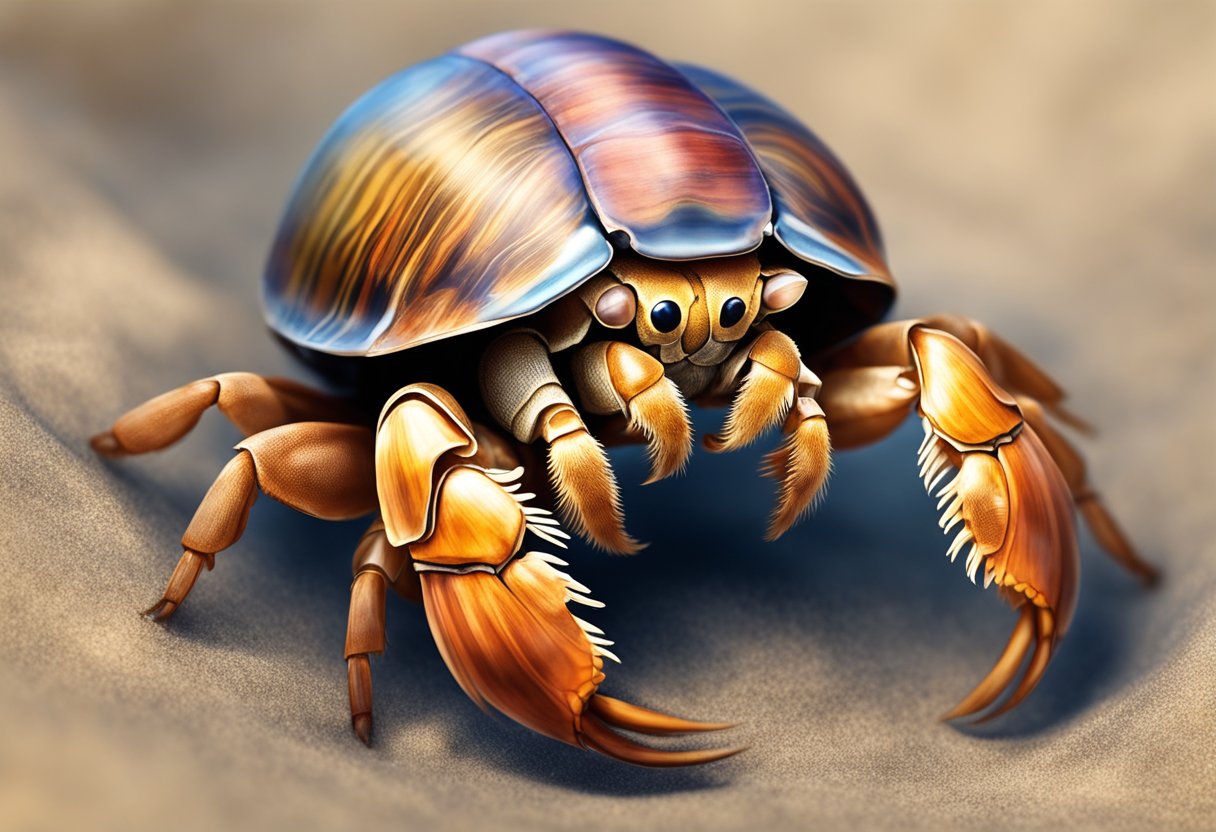
It is crucial for hermit crab caretakers to be well-informed about the proper conditions for a safe habitat and the typical behaviors exhibited by these unique pets. Observing changes in behavior, the absence of movement over a prolonged period, or a foul odor can be indicators of death. However, many of these signs may also overlap with a molting crab, so knowledge about the molting process is equally important. To prevent misjudging a crab’s condition, and to understand when it’s appropriate to seek guidance from a veterinarian, familiarizing oneself with the molting process and hermit crab behavior is necessary.
Key Takeaways
- Observing hermit crab behavior is essential to distinguish between molting and death.
- A healthy habitat and knowledge of the molting process are important for proper care.
- Consultation with a vet is advised for uncertain health concerns.
Understanding Hermit Crab Behavior
To effectively determine the health status of hermit crabs, we need to understand their normal behaviors and how they exhibit stress.
Normal Hermit Crab Activities
Hermit crabs are naturally nocturnal creatures, meaning they are most active during the night. In the confines of a tank, we expect to see them exploring, climbing, and foraging for food once the lights go down. The substrate of their habitat, ideally a mix of sand and coconut fiber, serves multiple purposes. It allows hermit crabs to burrow for safety, which is also crucial during the molting process—a time when they shed their exoskeleton to grow.
- Common nightly activities include:
- Climbing on rocks or tank decorations
- Burrowing in the sand
- Foraging for a variety of foods
- Interacting with other hermit crabs
The molting process can result in a hermit crab remaining buried for extended periods, sometimes up to a few months for larger crabs.
Signs of Stress in Hermit Crabs
Recognizing stress in hermit crabs is key to ensuring their well-being. Several signs indicate they are experiencing stress, which can be detrimental to their health.
- Indications of stress:
- Lack of activity: A crab that is lethargic during its usual nocturnal waking hours may be stressed.
- Poor appetite: Refusal to eat or lack of interest in food can be a sign of stress.
- Excessive hiding: While hiding is normal, especially during molting, excessive withdrawal might suggest stress.
- Surface molting: Molting above the sand rather than buried is a stress behavior and can be dangerous for a hermit crab.
Ensuring a proper habitat with adequate sand depth, access to both fresh and salt water, sufficient food, and a stress-free environment is integral for the health of hermit crabs.
Molting Process Explained
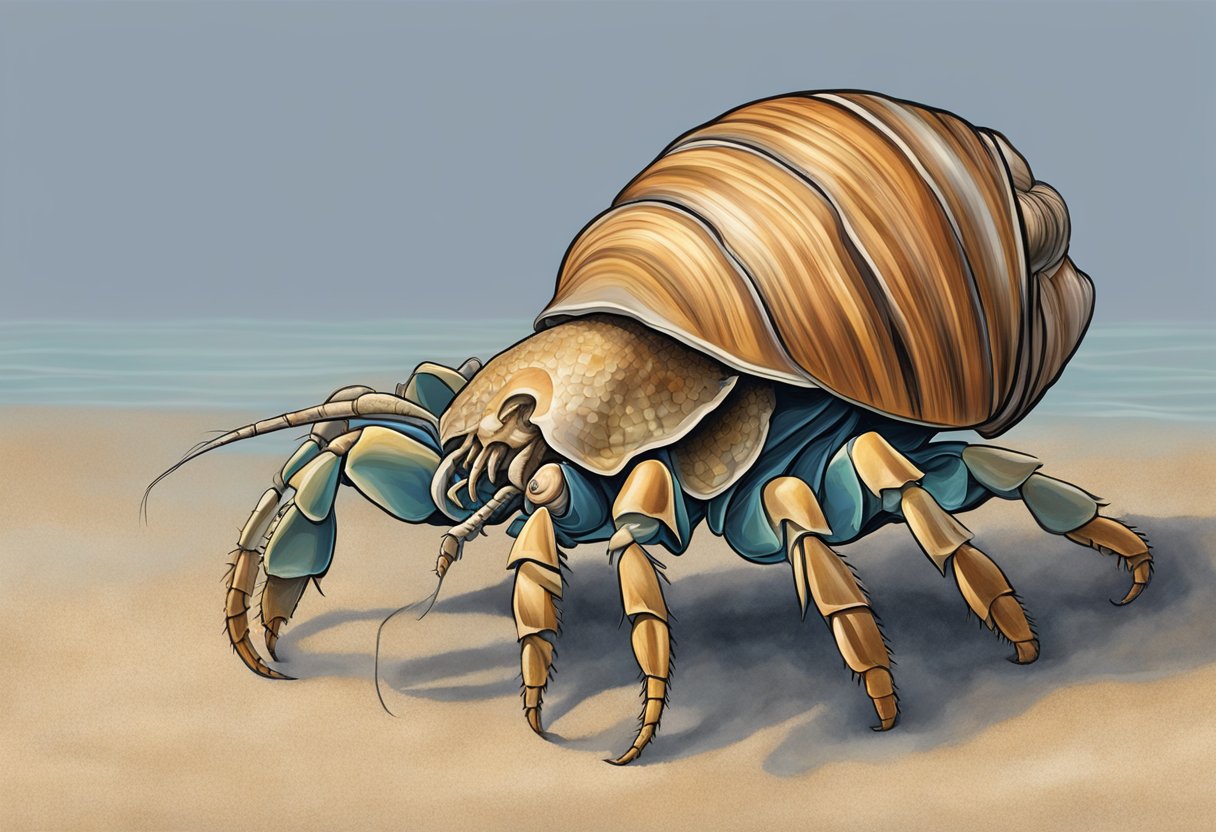
Molting in hermit crabs is an essential process of growth which involves shedding their exoskeleton and forming a new one. We’ll examine the stages and signs to help us understand what hermit crabs go through during this critical time.
Stages of Molting
1. Pre-molt:
Hermit crabs prepare for molting by eating excessively to store energy and absorbing plenty of water to help separate the old exoskeleton.
2. Molting:
During molting, the hermit crab will bury itself in the substrate to safely shed its exoskeleton and begin the process of growing a new one.
3. Post-molt:
After shedding, the new exoskeleton is soft and vulnerable. The crab will remain hidden until its new shell hardens.
Hermit Crab Molting Signs
- Reduced Activity: Before molting, crabs may become less active or reclusive as they conserve energy.
- Digging/Burying: We may notice increased digging as the crab searches for a suitable place to bury itself and begin molting.
- Change in Appearance: Their exoskeleton may look dull or have a chalky appearance, indicating its readiness to be shed.
- Isolation: Crabs typically isolate themselves to improve safety during the vulnerable molting stage.
Understanding these aspects of the molting process can inform us on how to provide the right care and environment for hermit crabs to molt successfully.
Identifying a Dead Hermit Crab
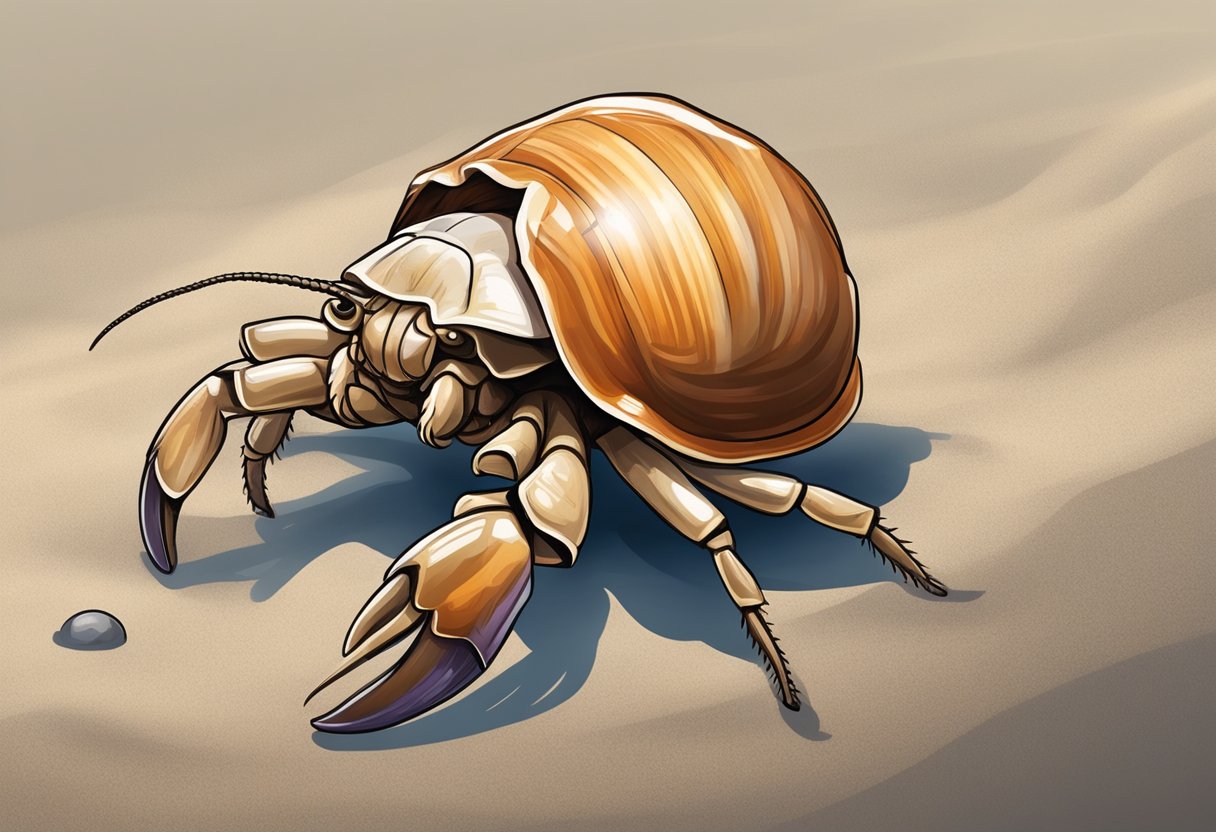
When it comes to determining whether a hermit crab is dead or just molting, careful observation of physical signs and any behavioral changes is key.
Physical Indicators of Death
Legs and Antenna: A dead hermit crab often has limbs that are limp and may appear droopy or lifeless. If the crab’s legs and antenna lack motion over an extended period and show no sign of muscle control, this could indicate death.
Color and Smell: The color of a deceased crab can become dull and sometimes translucent. Another significant sign is the smell; a strong, fishy-smelling odor is typically released when a hermit crab starts to decompose. This odor is often unmistakable and can be the most apparent indicator of death.
Body and Shell: When picking up the shell, if the crab’s body falls out or seems hollow, it indicates that the hermit crab is dead as healthy crabs have a tight grip on their shell.
Behavioral Changes
Lethargy and Appetite: If previously the hermit crab demonstrated lethargy and a lack of appetite, it might have been sick. While sickness does not always result in death, these can be preceding signs.
Movement: Observe for any movement. Hermit crabs are nocturnal, so it’s essential to check at night when they are most active. A crab that remains motionless and immobile for an atypically long stretch of time, especially when gently prompted, may be dead.
Recognizing a dead hermit crab involves examining these physical and behavioral cues closely. If the crab shows signs of lethargy, has a fishy smell, appears lifeless without grip, and exhibits no movement or reaction to gentle stimuli, these signs collectively suggest that the crab is no longer alive. Remember that periods of inactivity and hiding can be normal, especially during molting, so these observations should be made over a span of time rather than from a single point.
Creating a Safe Habitat for Hermit Crabs
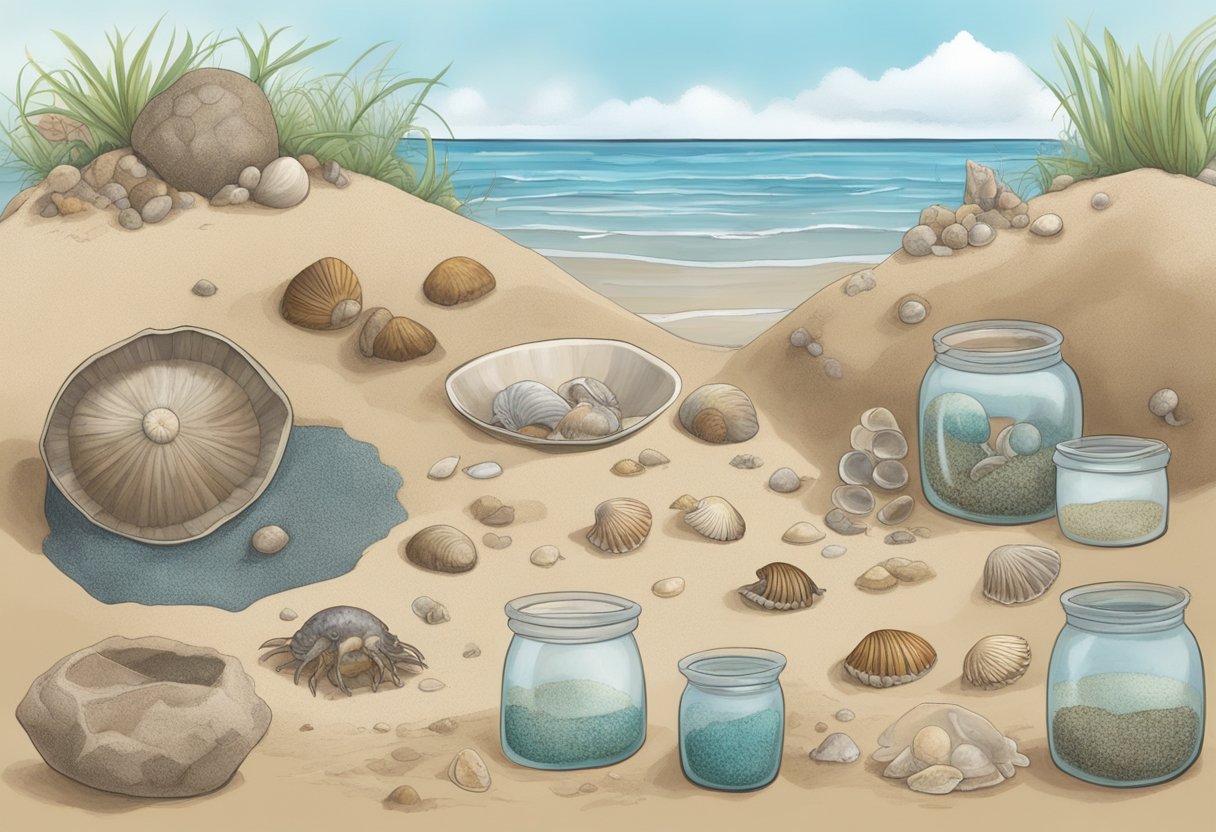
We must ensure that our hermit crabs have a secure and comfortable environment that caters to their natural behaviors, such as burrowing, climbing, and molting. Providing the correct habitat is essential for their wellbeing and longevity.
Setting Up the Right Tank Environment
When selecting an aquarium, a glass tank of at least 10 gallons is a good starting point for a small group of hermit crabs. Larger groups will require more space. The tank must have a secure lid to maintain the necessary humidity levels of 70-80% and to prevent escape. Ventilation is important, but it shouldn’t compromise the humid conditions hermit crabs need.
We should equip the habit with various items that allow for climbing and hiding, which will offer stimulation and closely mimic their natural environment. Accessories like driftwood, coral pieces, and choya wood are suitable for this purpose. An isolation tank is also a wise addition for a molting hermit crab, as this will provide a stress-free zone for them to shed and regenerate their exoskeleton safely.
Hermit crabs thrive in a community, so having several tank mates is generally beneficial, but ensure the tank is not overcrowded, as this can cause stress and aggression.
Importance of Proper Substrate
The substrate is a foundational element of a hermit crab enclosure, serving as a protective barrier and allowing for natural behaviors like burrowing, especially when molting. A blend of play sand and coconut fiber—sufficiently mixed in equal parts—provides an ideal texture and support for tunnels. The substrate depth should be at least twice the height of the largest crab, allowing them to bury themselves completely when they require a molting period.
For the setup, here is how we need to layer our enclosure:
- Top Layer: Play sand and coconut fiber blend, moistened to a sandcastle-building consistency.
- Middle Layer: Slightly more damp to support molting burrows.
- Bottom Layer: Gravel for drainage, although for most enclosures, a simple deep sand layer without gravel is adequate.
Keeping the substrate clean and free from contaminants is essential. We must regularly spot-clean the substrate and replace it entirely every few months to prevent the buildup of harmful bacteria and maintain a healthy habitat for the crabs.
Care for a Molting Hermit Crab
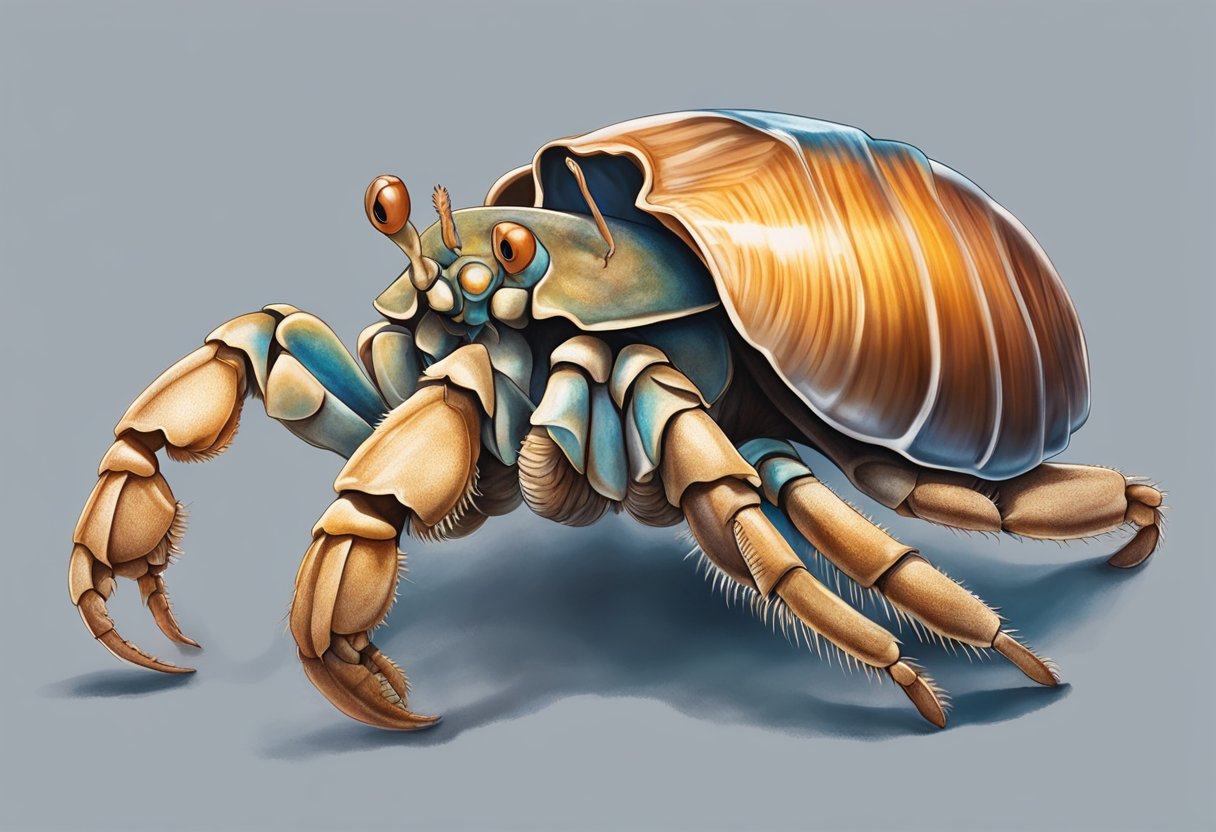
Understanding the molting process is crucial for the health of a hermit crab. During molting, crabs shed their exoskeleton, and often bury themselves for protection.
Isolation During Molting
To ensure a safe molt, we place the hermit crab into an isolation tank. We follow these steps:
- Select an Appropriate Isolation Tank: The tank should be large enough for the crab to move freely and bury itself. It should have the same temperature and humidity conditions as the primary habitat.
- Prepare the Substrate: A mix of sand and coconut fiber, around 6 inches deep, allows the crab to bury itself. We make sure it’s mildly moist to help with the excavation.
- Transfer the Crab Gently: When signs of molting are evident, such as sluggishness or faded color, we carefully move the crab to the isolation tank to minimize stress.
Post-Molting Care
After a hermit crab molts, special care is required for recovery and regeneration. We take the following steps:
- Monitor Without Disturbing: We check on the crab without unearthing it, looking for any movement or the discarded exoskeleton at the surface.
- Enhanced Nutrition: To aid in exoskeleton regeneration, we introduce calcium-rich and protein-packed foods once the hermit crab resurfaces.
- Limbs Replacement: If the crab has lost limbs, molting gives it a chance to replace them. We ensure it has the necessary nutrition to facilitate this regeneration.
Through careful observation and by providing a secure environment, we help our hermit crabs successfully complete their molting process.
When to Consult a Vet
When the behavior or appearance of our hermit crab suggests serious health concerns, it’s critical to seek professional veterinary care.
Recognizing Serious Health Issues
We must observe our hermit crabs closely for indicators of illness. Lethargy, for example, is a telltale sign; a healthy hermit crab is typically active, especially at night. If our crab is consistently inactive during these periods, it could indicate a health problem. Another concern is a change in appearance or behavior after a recent molt; complications during molting can be life-threatening and require immediate attention.
Signs That Require Professional Help
Here are specific signs when we should contact a vet:
- Extended Inactivity: If the crab remains motionless for prolonged periods outside of molting.
- Discoloration: Unusual shades on their body or limbs that persist could point to an internal issue.
- Lack of Appetite: Consistent refusal of food over several days is abnormal.
- Odor: A foul smell is a sign of internal decay in the absence of a molting process or discarded food.
- Shell Issues: Repeated, frantic attempts to switch shells or an inability to stay within a shell can indicate distress or a physical problem.
Timely consultation with a vet can help address stress-related behaviors or illnesses, providing targeted care for our hermit crabs.
Proper Disposal of a Dead Hermit Crab
When a hermit crab passes away, it’s important to handle the disposal responsibly to prevent any potential health risks.
Steps for Handling Dead Crabs
- Locate: Firstly, ensure the hermit crab is indeed deceased. Look for a lack of movement and a foul odor as signs of death.
- Prepare: Before handling, wear gloves to avoid direct contact with the dead crab.
- Containerize: Place the crab in a sealable plastic bag to contain any potential odors or disease.
- Dispose: Bury the hermit crab or dispose of it with the regular trash, according to your local guidelines for pet disposal. Do not flush the crab, as this can contaminate water systems.
Avoiding Contamination and Disease
- Sanitize: After disposal, thoroughly clean the crab’s habitat and any tools used with a solution of bleach and water to eliminate potential pathogens.
- Monitor: Observe any remaining hermit crabs for signs of illness, as certain diseases can be contagious among crustaceans.
Preventing Early Death in Captivity
Hermit crabs are hardy creatures, but in captivity, our attention to their environmental and dietary needs is crucial for their longevity.
Minimizing Stress Factors
We must replicate a hermit crab’s natural environment as closely as possible to minimize stress. This includes:
- Housing: Spacious tanks that allow for adequate movement and natural behaviors.
- Temperature: A consistent temperature range of 72 to 80 degrees Fahrenheit.
- Humidity: High humidity levels, ideally between 70% and 80%, to prevent gills from drying out.
- Substrate: A blend of sand and coconut fiber to enable natural burrowing habits.
- Companionship: Hermit crabs are social animals and thrive with fellow crabs.
To reduce stress from the pet store to your home, ensure a swift and safe transition into their new habitat.
Diet and Nutrition Needs
A balanced diet is essential for the health of land hermit crabs. We focus on the following:
- Fresh Water: Provide both fresh and saltwater pools for hydration and shell regulation.
- Protein: Offer a variety of protein-rich foods, as crabs need protein to grow and repair their exoskeleton.
- Balanced Diet: A mix of fruits, vegetables, nuts, and commercial hermit crab food to meet all nutritional needs.
Regularly check for signs of a healthy appetite and ensure they always have access to food and water to prevent dehydration and malnutrition.
Final Thoughts
When assessing the status of a hermit crab’s health, it’s crucial to observe with care and patience. We are aware that the distinction between dormancy and death can be subtle. Look for the following signs:
- No Movement: After a gentle prod, if there is still no reaction, it could indicate that the crab is no longer alive.
- Odor: A strong, foul odor usually signifies death.
- Body Color: If the hermit crab’s body is a greyish color and limp, it is likely deceased.
- Weight: If the shell feels unusually light, it may mean that the hermit crab has passed and its body has begun to decompose.
- Positioning: Hermit crabs often fall out of their shells when they die.
Our advice should always be coupled with consideration for each individual hermit crab’s behavior and history. In some cases, what may seem like death could be a sign of a deep molt or a stress response. If in doubt, it’s best to seek advice from a vet or a hermit crab expert.
Act promptly if you suspect your hermit crab has died to maintain a healthy environment for any other hermit crabs. Remove the deceased crab to prevent any potential health risks associated with decay.
Remember, responsible hermit crab care includes monitoring for signs of life and death alike. Observant and informed hermit crab owners are better prepared to ensure the well-being of their pets.
Frequently Asked Questions
In this section, we address common concerns regarding how to determine if a hermit crab is no longer living and the steps to take upon discovering your pet in such a state.
What are the indications that a hermit crab has passed away?
When a hermit crab dies, its limbs become limp and it may fall out of its shell. The body can also appear more greyish in color, and the limbs may eventually start to decompose if unnoticed for some time.
Can you identify the death of a hermit crab by its odor?
Yes. A dead hermit crab often emits a fishy or rotten smell. This distinctive odor is usually noticeable and can be a clear sign that the crab is deceased.
What steps should you take if you find your hermit crab motionless outside its shell?
If your hermit crab is outside its shell and motionless, gently check for signs of life by offering water or a light touch. If there is no response and the crab seems limp with a foul odor, it may have died.
What noticeable changes occur in a hermit crab’s appearance after it dies?
After death, a hermit crab’s exoskeleton will stop hardening. It may also exhibit a washed-out color and show no signs of movement or reaction to touch.
How can you differentiate between a molting hermit crab and one that’s no longer alive?
Molting hermit crabs often bury themselves and remain still, but they will have a firm body if gently touched. A deceased crab, by contrast, will have a limp body and may emit an offensive odor.
Is lack of movement always a sign that a hermit crab is deceased?
Not necessarily. Hermit crabs can remain still when stressed, during molting, or in colder temperatures. Before concluding your crab is deceased, consider these factors and observe carefully for other signs of life.
